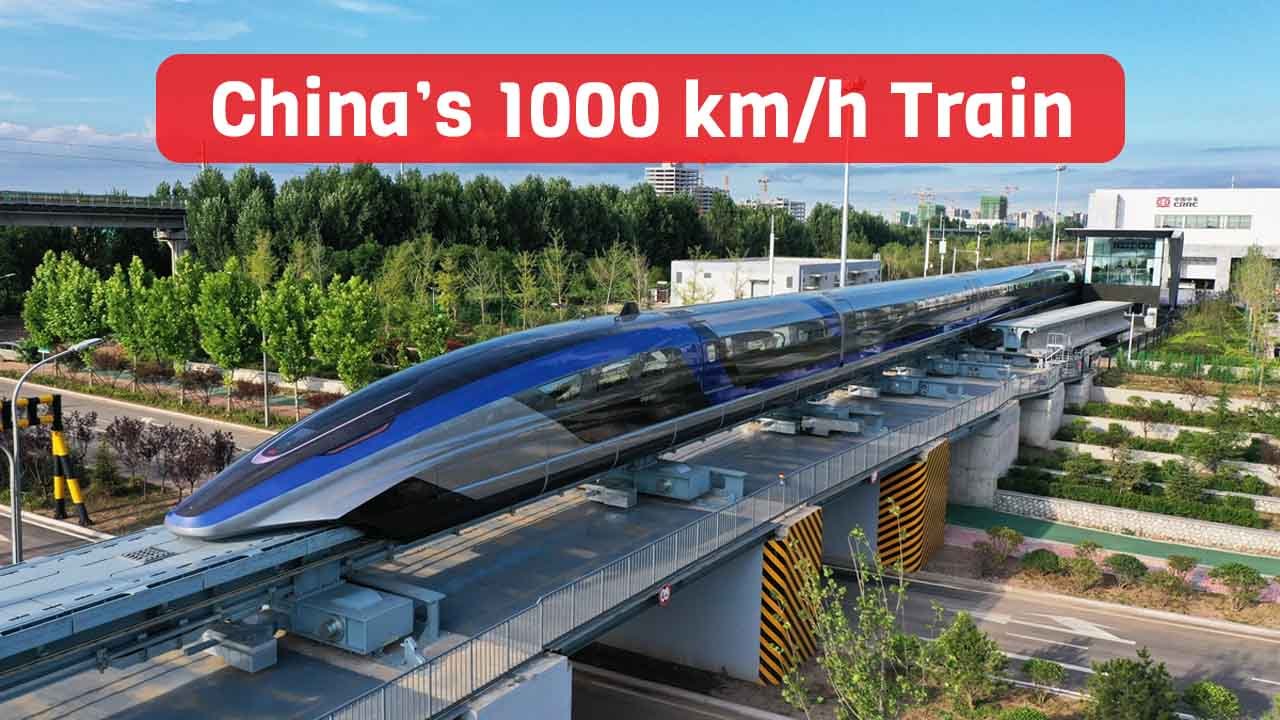In a remarkable achievement for the future of transportation, China has successfully carried out a major test of its ultra-high-speed (UHS) maglev train system in Shanxi Province. This advanced transport technology, which has been in development for several years, is designed to travel at extraordinary speeds of up to 1,000 kilometers per hour (km/h).
The recent test marks a significant step forward in the race to create faster, quieter, and more efficient modes of travel for the modern world. By reaching such high velocities, this new system has the potential to dramatically cut travel time between cities and reshape the way people experience intercity journeys in the coming years.
The new maglev system is the result of a collaborative effort between China Aerospace Science and Industry Corporation Limited and local officials in Shanxi. Together, they developed and tested this groundbreaking system in Yanggao County, a region nestled within Datong City.
The location served as the backdrop for a crucial demonstration, showcasing the real-world capabilities of the maglev train in a controlled environment. The test was carefully monitored to ensure that every component of the system performed as expected, and the results were extremely promising. This project combines cutting-edge aerospace technology with modern railway engineering, creating a fusion of innovation that could set a global standard for high-speed ground transport.
Maglev, short for magnetic levitation, uses a highly advanced system of powerful magnets to lift the train slightly above the track and propel it forward. By floating just above the rails, the train avoids the friction that typically comes from wheels grinding on tracks. This allows for much higher speeds, smoother rides, and less wear and tear on both the train and the rail system.
Because there is no direct contact with the track, the maglev train also operates much more quietly and with far less vibration than traditional trains. This not only makes the ride more comfortable for passengers but also reduces noise pollution in urban areas. The technology behind maglev is complex, but its benefits in terms of performance, safety, and passenger experience are undeniable.
According to a report from the Global Times, the test run took place inside a specially built, 2-kilometer-long vacuum tunnel. This tunnel maintained a low-pressure environment to minimize air resistance, allowing the superconducting maglev train to reach high speeds while consuming less energy.
During the test, the train demonstrated precise control in multiple areas: it stayed on its designated path without deviation, remained steadily suspended above the track, and was able to decelerate safely when needed. Engineers noted that the train’s behavior closely matched the predictions made during simulations, which is a strong sign that the system is ready for future development. This trial proved not only the train’s speed and stability but also its potential reliability in real-world operations.
One of the most important aspects of the trial was the successful demonstration of several key technologies that are essential for high-speed maglev operation. Among them was the ability to create and maintain a vacuum environment over a long distance, which is a critical factor in reducing drag and energy use at ultra-high speeds.
The test also validated the train’s superconducting magnetic system, which guides the vehicle and keeps it levitating without touching the track. Engineers also tested how different systems interacted in the vacuum environment, including the controls, sensors, and propulsion units. The result was a highly coordinated system where all components worked together seamlessly, showing that the train can operate safely and efficiently under extreme conditions.
The UHS maglev project began in April 2022 in Yanggao County. Since then, engineers and researchers have been working hard to merge advanced aerospace technology with next-generation railway engineering. The goal is to develop a transport system that can travel faster than any other ground-based system in the world. This project doesn’t just aim for speed—it aims for safety, comfort, energy efficiency, and long-term sustainability.
Once fully developed, such a system could become the backbone of China’s future transportation network, connecting major cities in record time and reducing the country’s dependence on air and highway travel for long-distance journeys.
While this recent trial marks a turning point, China has been a pioneer in maglev technology for years. The first commercial maglev train service was launched in Shanghai in 2004, where it continues to operate between the city and the airport. Since then, other countries like Japan and South Korea have launched their high-speed maglev systems, each pushing the boundaries of what’s possible in ground transportation. In the United States, several proposals are under consideration, including one for a high-speed maglev line that would link Baltimore to Washington, D.C. As global interest in sustainable and rapid transportation grows, China’s success with this new maglev system could inspire similar innovations around the world.
Perhaps the most exciting possibility lies in how this technology could change everyday travel in China. Once operational, the ultra-high-speed maglev train could reduce the travel time between Beijing and Shanghai to just 90 minutes.
That’s faster than most commercial flights when you factor in airport check-ins and security procedures. Such a dramatic reduction in travel time would make commuting between cities easier than ever before, opening up new possibilities for business, tourism, and lifestyle. It would also help ease congestion in the country’s already busy transportation networks by offering a faster, cleaner alternative to traditional rail or road travel.
In conclusion, China’s successful test of its UHS maglev train is not just a technical achievement—it is a glimpse into the future of mobility. By combining aerospace precision, magnetic innovation, and a vision for a faster world, this project sets the stage for a new era of transportation. If future tests continue to show such promise, China could soon lead the world into a high-speed, low-friction age where distance no longer dictates opportunity.

Leave a Reply